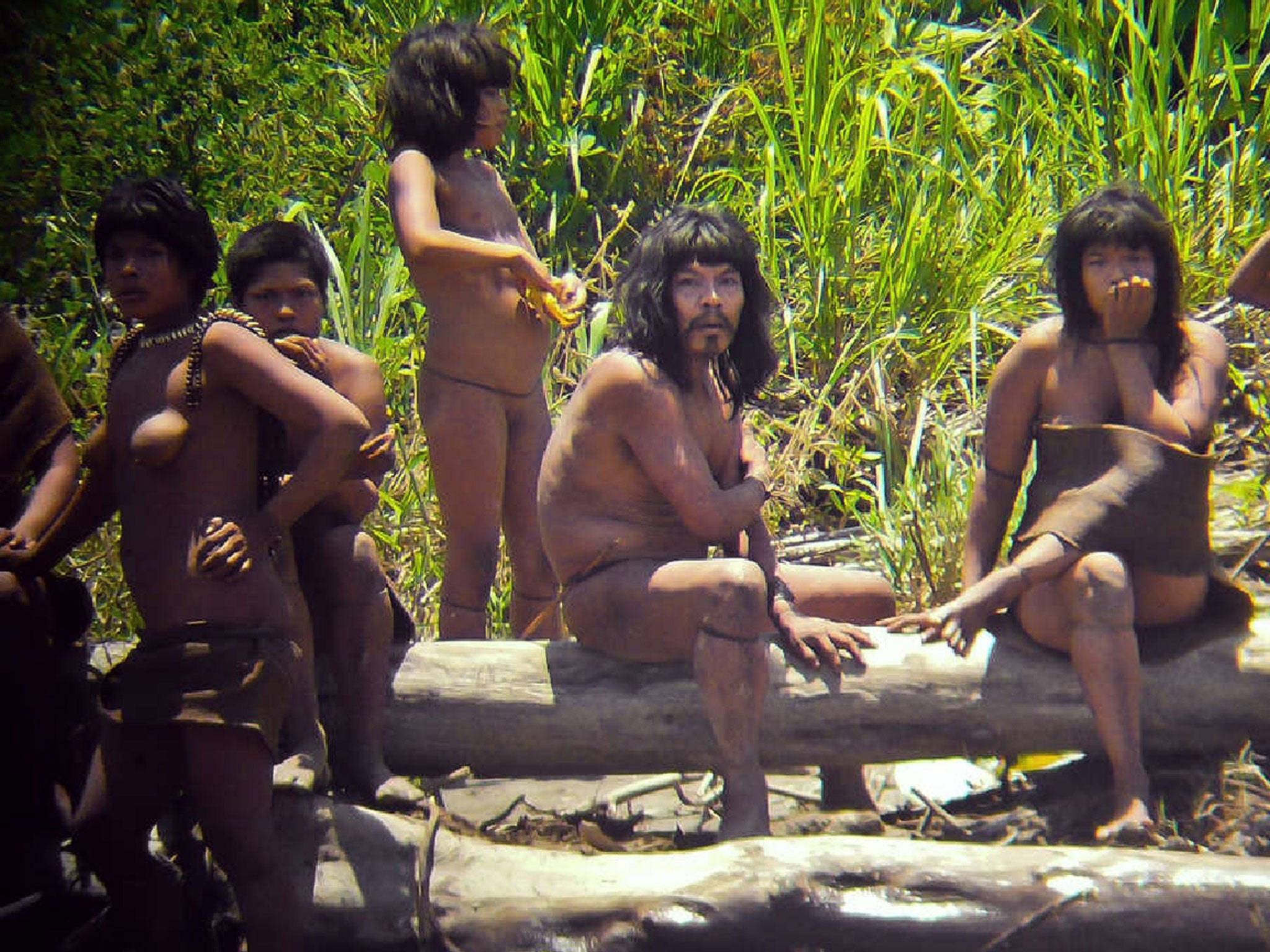Lure of modern tools is bringing uncontacted tribes of Peru into the open
Anthropologists say the lure of modern tools is now tempting them closer than ever to far-flung villages and tourist camps

Six Mashco Piro tribeswomen crouched low as they escaped into the jungle after raiding a remote lodge in Peru’s Manu National Park in the western Amazon, clutching newly prized tools: saucepans.
The brazen daytime foray into the tourist retreat in May was a rare appearance by one of the world’s most reclusive tribes, which is increasingly chancing contact with the outside world.
The Mashco Piro have clashed in the past with loggers, poachers and drug traffickers who invaded their jungle enclaves, but anthropologists say the lure of modern tools is now tempting them closer than ever to far-flung villages and tourist camps.
“It’s a technological revolution,” said anthropologist Klaus Rummenhoeller, who has been studying Amazonian tribes in Peru since the 1980s. “Imagine you live in the wild and have only stone axes, and then you’re given machetes.”
Their sorties are dangerous, exposing them to the threat of violent encounters with terrified locals and modern-day diseases against which they have little immunity.
“They sounded like birds,” said Guillermina Loaiza, a cook at the lodge who disturbed the tribeswomen as they rifled through her kitchen. “I thought it was another tourism agency playing a practical joke.”
The tribe is estimated to number no more than 600 and is split into groups who move through the jungle, occasionally constructing makeshift shelters on river banks where they dig for turtle eggs.
Peru’s government prohibits physical contact with the Mashco Piro and another dozen so-called “uncontacted” indigenous tribes, primarily for their wellbeing. Their immune systems carry little resistance to illnesses that other humans carry. “It’s extremely urgent because there are more every time, and it’s a relatively highly transited area,” said anthropologist Luis Felipe Torres. “Anything could happen.”
Torres said a Catholic priest and mayor of one local town in Peru’s eastern reaches near the border with Brazil were among a small group who had tried to tempt the Mashco Piro out of their hideouts with rewards, pitying their primitive existence. Authorities say they can do little to prevent individuals ignoring the contact ban because there is no penalty.
Instead, armed with a budget of just £350,000 a year, a government team tasked with preventing the Mashco Piro and other uncontacted tribes succumbing to modern diseases, strives to dissuade outsiders from making contact.
In the 1980s, germs wiped out half of Peru’s Yora tribe after illegal loggers penetrated the forest along roads built for oil and gas exploration. Three years ago, doctor Fernando Mendieta helped prevent an outbreak of respiratory infections wreaking havoc among a group of Machiguenga indians after a Canadian searching for a lost Inca city passed through their village.
But Mendieta said he would be wary of treating the Mashco Piro because of their aggression. They killed one local man and wounded a park ranger with arrows in 2011.
Wanting to placate them, locals in the town of Diamante leave machetes and bananas out on the shore of Alto Madre de Dios River, said logger Henry Bonifacio.
Reuters
Subscribe to Independent Premium to bookmark this article
Want to bookmark your favourite articles and stories to read or reference later? Start your Independent Premium subscription today.

Join our commenting forum
Join thought-provoking conversations, follow other Independent readers and see their replies